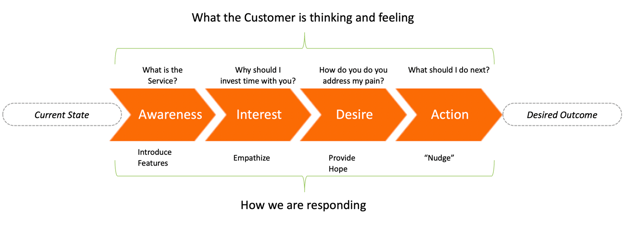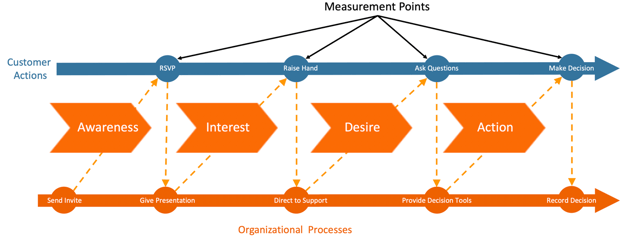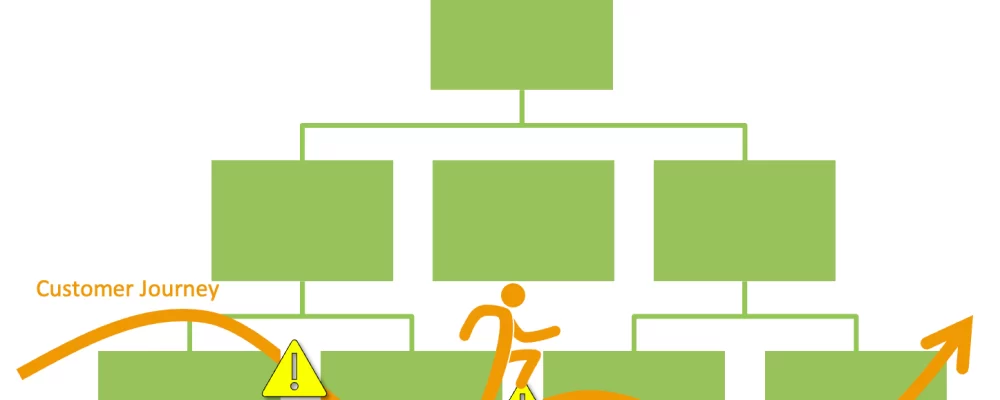Does your organization actively measure and report on your customer experience (CX)? Or is your customer experience a vague catchphrase, like “This initiative is critical to the customer experience” or “We are a customer-driven organization?”
No one can argue the validity of statements like that. But if you’re like many organizations, you rarely have the necessary tools to accurately analyze the customer journey to back up those customer experience statements with actual data. Historically, customer satisfaction (CSat) and net promoter scores (NPS) are the responsibility of the analytics team, measured every six months. So, how do teams typically collect information on the customer experience? The secret lies in purpose-driven CX with an actionable assessment tool.
Why Businesses Need a CX Assessment Tool
Customer surveys are a commonly used tool but are not entirely helpful. There is no ‘stored value’ post-purchase after the customer journey experienced in the service world so surveys can be misleading and inaccurate.
For example, you received a survey in April about your driver’s license renewal that you ‘experienced’ in January… Could you even remember that day? Or the details of your experience as a customer? The positives and the negatives? And, let’s be honest, how often do you take the time to respond to those surveys with meaningful feedback? In fact, only about 4% of dissatisfied customers complain, and the other 96% will leave without a word to take their business and loyalty elsewhere.
Businesses that want to gain insight into the CX need a detailed, comprehensive, and actionable tool. At the core of the best CX assessment tools is a customer journey map.
Creating a Customer Journey Map in Four Stages
The customer experience is often modelled as a sequence of interactions between the customer and the organization’s front-line personnel (e.g., customer service) or technology (e.g., a website). Without proactive end-to-end customer journey mapping and testing that identifies and links touch points to instrumentation, the experience can feel disjointed.
It resembles more of an uninformed wandering than a mapped customer journey where every action points to an ideal outcome. We need clarification on the next step and where we should go. Often, customers don’t know where they need to go or the next step they should take, so we must guide them, especially since it might be their first time experiencing your brand and exploring your offerings.
Successfully creating a customer journey map takes extensive planning and evaluation at each interaction between the customer and the business to ensure the customer is guided to where they want to go and satisfied by the journey they took to get there. To purposefully design this customer experience, we use a framework known as AIDA. We break this down into four separate stages of any customer journey. Each customer journey stage addresses what the customer is thinking and feeling.
Every interaction with the customer should appeal to their wants and needs with the ability to encourage them along the customer journey (see Figure 2).

Figure 2: The Four Stages of the Customer Journey – Awareness, Interest, Desire, Action (AIDA)
When mapping the customer journey, we keep in mind what the customer is thinking and feeling at that moment to be able to respond accordingly and seamlessly. The four stages of the customer journey are:
- Awareness: Drive brand awareness of your product or service.
- Interest: Pique the customer’s interest in what your product or service offers.
- Desire: Let your customer create an emotional connection between their aspirations or wishes for your brand and offerings.
- Action: Present a call to action for the customer to act on to direct them to the right place to help accomplish their goal.
The corresponding responses from the front-line personnel or technology are:
- Awareness: Introducing features of your product or service to educate the visitor or customer.
- Interest: Empathizing with their wants, needs, and pain points.
- Desire: Providing hope that there is a solution to their problem.
- Action: Nudging them to complete an activity that is mutually beneficial.
How to Measure Critical Points on the Customer Journey
So now that you’ve broken your customer journey into the four stages of AIDA, let’s determine how you measure the success of each interaction throughout your customer experience. These critical touch points and interactions will be measured in real-time for accurate and actionable data to determine the performance of your customer journey.
The customer experience measurement metrics taken at each point can inform your analysis of the breakdowns and disjointed steps in the customer journey stages.
For instance, Figure 3 illustrates a simple example of an open enrollment experience when an employee chooses a coverage plan. The image identifies the organizational processes, the responses of the customer through their journey, and key points to measure. In this example, the four measurement points that reflect AIDA in the customer journey would be:
- Awareness (%) = (RSVPs÷Invites Sent)× 100
- Interest (%) = (Presentations ÷Questions Initiated)× 100
- Desire (%) = (Questions Directed to Support ÷Questions Asked)× 100
- Action (%) = (Positive Decisions ÷Support Responses)×100

Figure 3: The Designed and Mapped Customer Journey for Health Insurance On-Boarding
So in order to support lofty customer experience statements like “This initiative will improve the customer experience,” organizations needed to ensure the organizational processes and intended customer experience actions are mapped and articulated cross-functionally from the start.
Identify specific instrumentation points where the customer experience will be measured so you can analyze the customer journey points for future improvement. The data needs to be collected in real-time to ensure the promise of an exceptional customer experience is delivered. But if it isn’t, the organization has the insights to make course corrections.
Accelare “provides digital transformation consulting services that prioritize performance and results. Accelare’s S2E process and WorkFit are proven to create dramatic breakthroughs and lasting innovations integrated into the business model to build the capacity needed to transform into your next-generation business model.”
Please visit the firm link to site






